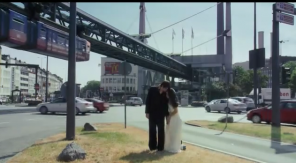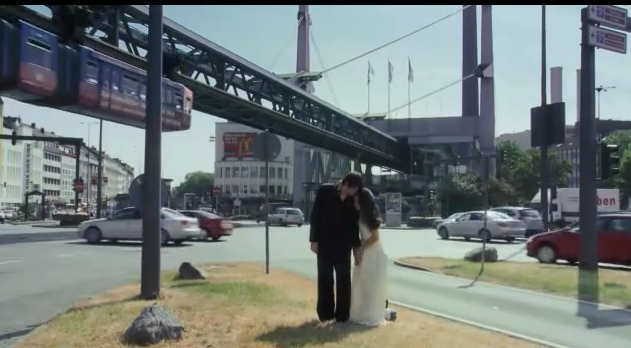This is the third installment in my arts marketing series, previously called, tongue-in-cheek “Arts Marketing for Dummies,” which for obvious reasons is not a suitable longer-term title: Part 1 on non-profit inefficiency, Part 2 on online communications.
I like to use real-world examples when it comes to arts marketing, because in the arts, people are inclined to congratulate you for trying, rather than succeeding. That’s not necessary helpful in business communications, where you seek more targeted feedback. Because we all fail, this isn’t to spotlight any particular organization but to recognize that we’ve all been there. That said, let me roast SIFF a little, on two counts: first, a question of language usage, and secondly, a problem that arises from “life within our walls,” or institutional ritual.

This post would have been a review of Wim Wenders’ film Pina, his 3D film about Pina Bausch, which had an invitation-only screening for SIFF members last night at SIFF’s Uptown theater. About a week ago, an invitation popped into my overstuffed email inbox, offering me a free sneak peek. I happen to be a new SIFF member, and while I get invited to press screenings, there’s nothing like the feeling of seeing a film with a “real” audience, so I was happy to try this benefit out.
Typically with promotional screenings, there’s a pass you pick up at some participating retailer–SIFF asks that you both RSVP and print out a ticket to bring with you. With a pass, there’s no guarantee of seating; you show up early as possible and get in line. SIFF’s member screenings–despite the RSVP and printed ticket–work the same way, I discovered, to my chagrin. After taking the bus across town, I arrived 20 minutes early to see a line of people moving into the theater already. I joined about 20 people at the tail end, who were engaged in lively conversation about Pina, but were suddenly downcast to learn that the theater was full.
I looked at my ticket, to see where it said “Seating not guaranteed,” or “First come, first served.” Nothing like that. I suspect the original emailed invitation did, because I did have the impression that I needed to get there somewhat early. But here’s where consistent word choice is important for cueing people: neither RSVP (for a printed-out, personalized with your name ticket) suggests to the holder the reality of the situation, which is that SIFF routinely “overbooks” member screenings to account for people not showing up for free events.
The agreement with an RSVP is that you are making a commitment to show up, that the host can count on you, with the counter agreement that you can count on the host to expect you. It doesn’t make sense for you to RSVP to someone who is not saving space for you, personally. Nor, really, would you want to personalize a printed ticket that, well, isn’t one. A ticket stands for guaranteed admission. What’s needed here is a generic “pass” that reminds you of the relevant admission details in large type.
That’s fairly nitpicky, but it’s also why marketing communications feels like a job; you have to overthink every interaction and troubleshoot the smallest details.
The more problematic element here is that there’s a conflict between the individual the institution serves and the way the institution behaves. As the staff member explained to me, “We always overbook these events.” So this is established practice, right? Moving along.
But in fact, I am a brand-new member. This is the first time I’ve tried to use one of my member benefits. And my time is valuable. If you add in waiting for the bus to my travel time, there and back, I wasted about an hour and a half of my evening. (To “get it back,” I’ve turned the experience into a teachable moment, but it’s not really the same thing.)
To repeat, SIFF doesn’t want to assume that a new member knows what they “always” do, or that established practice carries any weight in consoling me–I’m new. The decision on overbooking is also something that has more to do with SIFF than me. It’s not a benefit to me, personally, that screenings are or aren’t full because other people didn’t show up.
If, as was suggested, the guideline is that I should try to arrive at 5 p.m. for good seats a 7 p.m. show, I think they’re stretching the concept of “benefit” a little farther than is supported. That’s more like a task, or ordeal. I call this kind of thinking “institutional ritual” because you don’t question ritual, you just perform it. But you do want to question a practice that results in your brand-new donors feeling snubbed, first thing.
From within SIFF, I understand perfectly how this may seem like an optimal way of not only filling the theater, but of keeping a sense of scarcity. But the downside–turning donors away who told you they’d be there a week in advance–is disproportionate, considering that the event only exists as a member benefit.
The important thing to note here, if you don’t work at SIFF, is how established practice gives strange things sanction. Institutional ritual plays a part every time you approve a practice that you personally would dislike to experience, but which is “good” for your organization. Maintaining a continual source of misunderstandings and disappointments is never good for an organization, long-term–people new to your organization will not necessarily feel empowered to complain, but will trust you less. Make the extra effort to resolve these imbalances, rather than rely on force majeure.
Now, to balance out this criticism, let me tell you about a SIFF event you can guarantee yourself a seat at:
Film fans are invited to see the Oscar-nominated dance film and Sundance Selects release PINA, and meet its acclaimed filmmaker during an exclusive 3-D screening event at Seattle Cinerama Theatre this month.
The event, which starts at 8 p.m. on February 17, is hosted by Seattle International Film Festival (SIFF) and the Cinerama as part of an ongoing effort to bring rich cinematic experiences to the Seattle community. PINA film director Wim Wenders will be on hand to talk about the documentary, which is a tribute to legendary dance choreographer Pina Bausch. There will be a question and answer session with Wenders moderated by Donald Byrd, artistic director of Spectrum Dance Theater.
Purchase your tickets ($30) at the Cinerama. (From February 10, you can see Pina at the Cinerama; after that run, it will move to SIFF’s Uptown Theatre.)
UPDATE: It’s always nice to see an organization make adjustments. Here’s an excerpt from SIFF’s latest newsletter to members:
What you need to know:
- Invitations are sent from Eventbrite (via email) one to two days prior to the screening date.
- Most screenings are shared screenings with other individuals throughout the community.
- Please only accept invitations if you are able to attend. (With nearly 4,000 members, it is only fair not to take up a spot you do not plan on using.)
- If for some unforeseen reason are unable to attend please contact Phoebe Hopkins, Development Coordinator, so we can open up your seat to other members.
- On the day of the screening please print and present your Eventbrite ticket for admission.
- Seating is first-come, first served.
- Arrive early to ensure your place in line.


